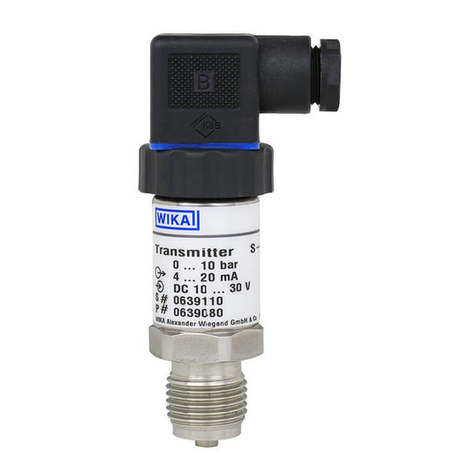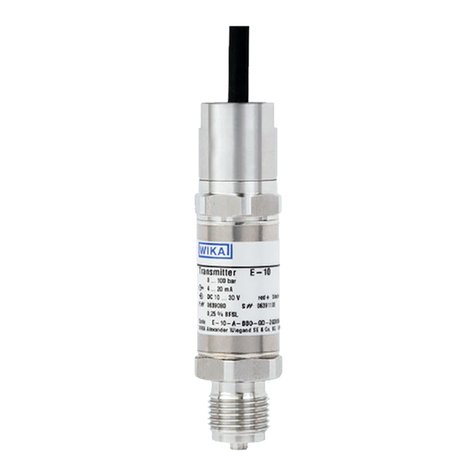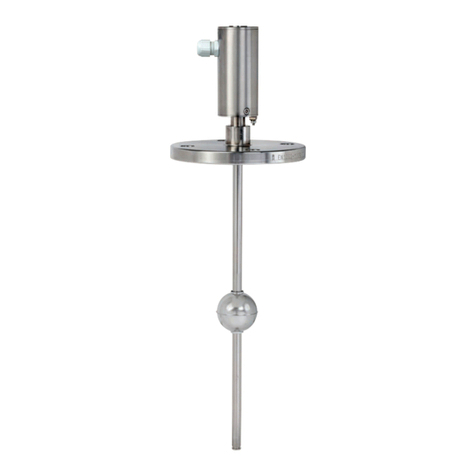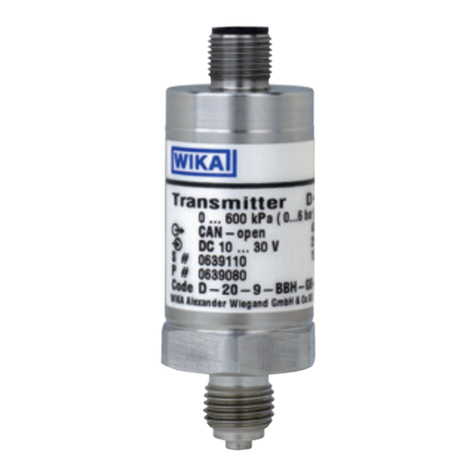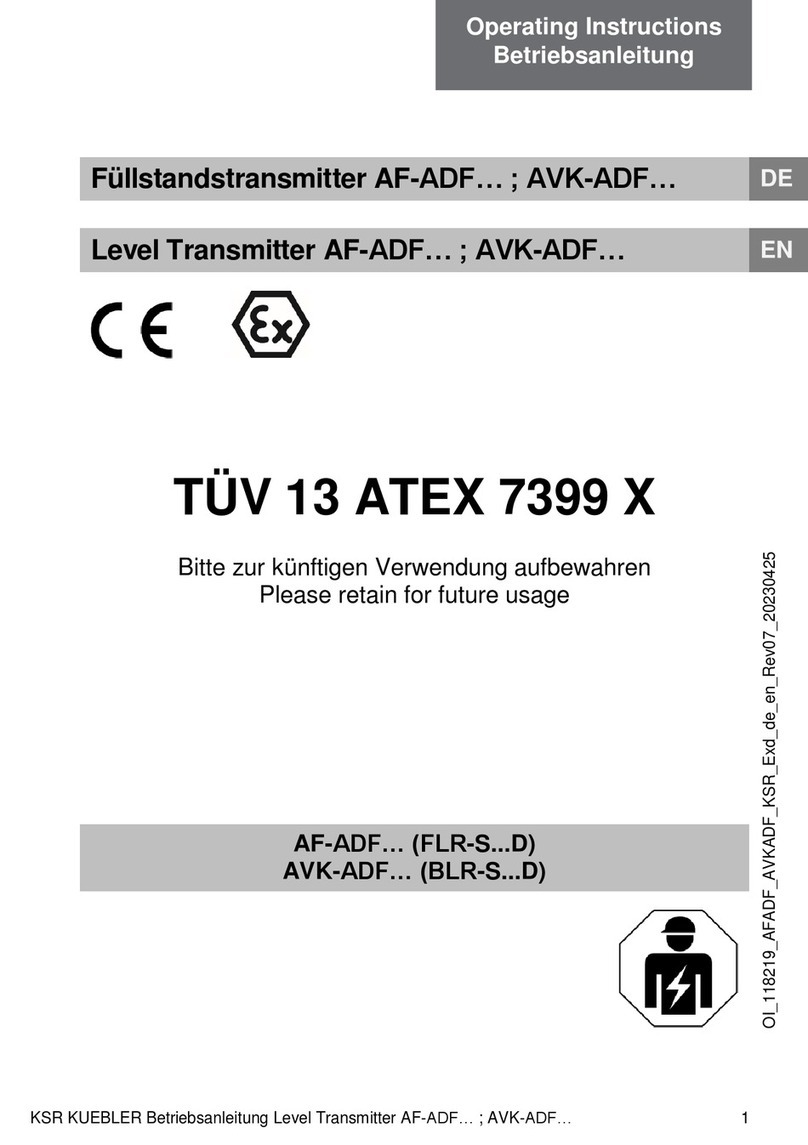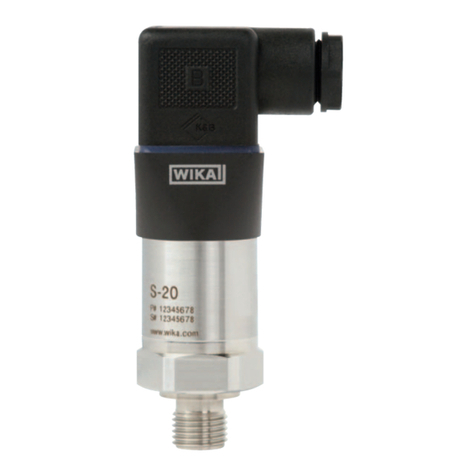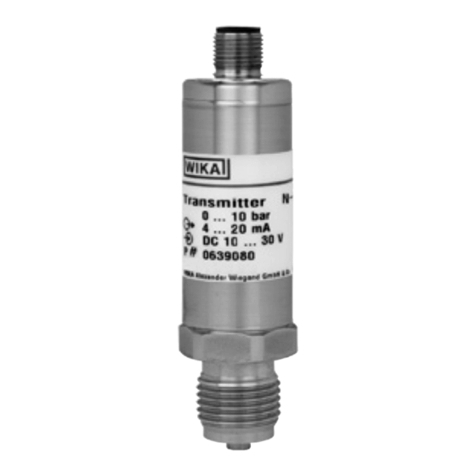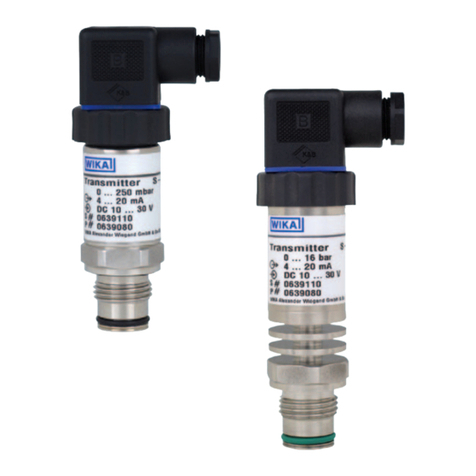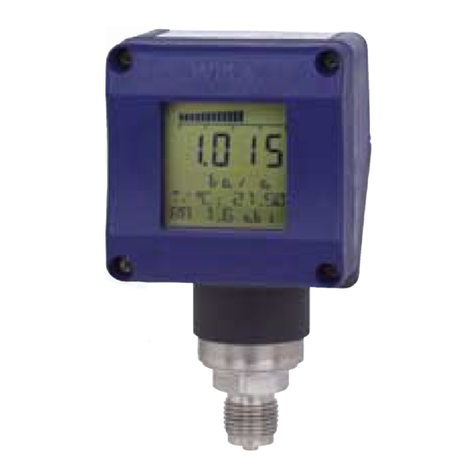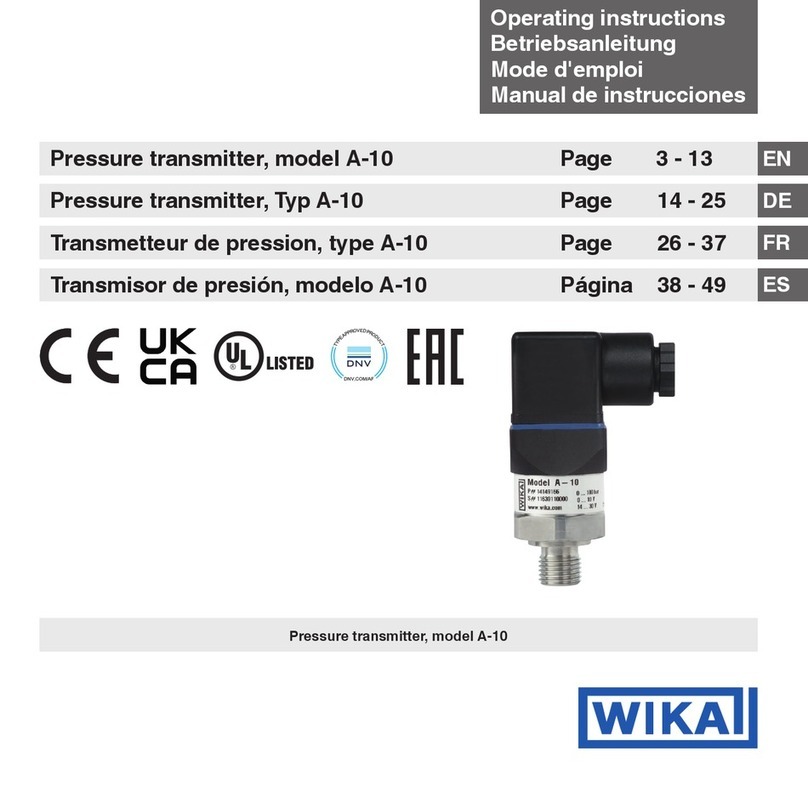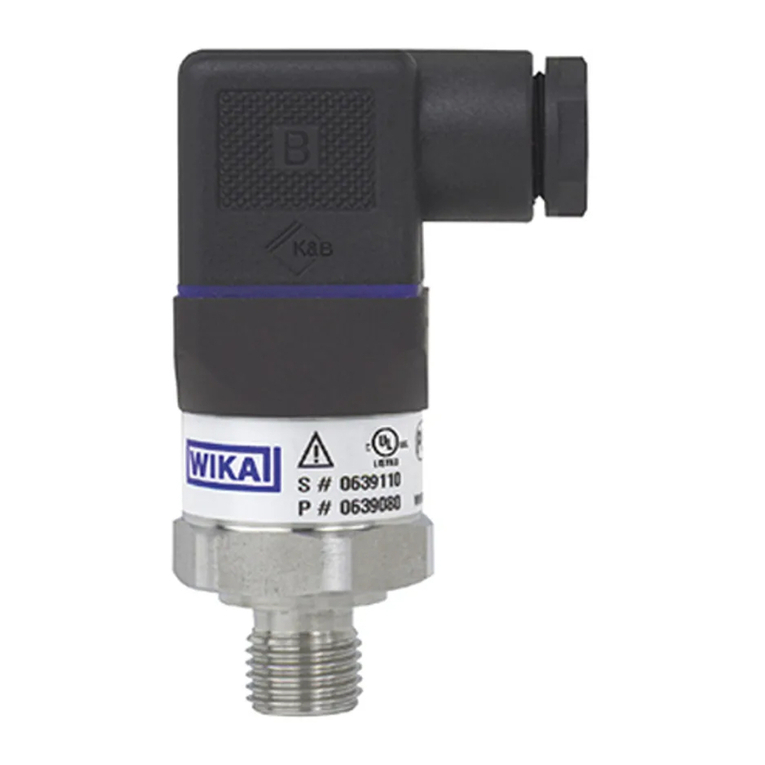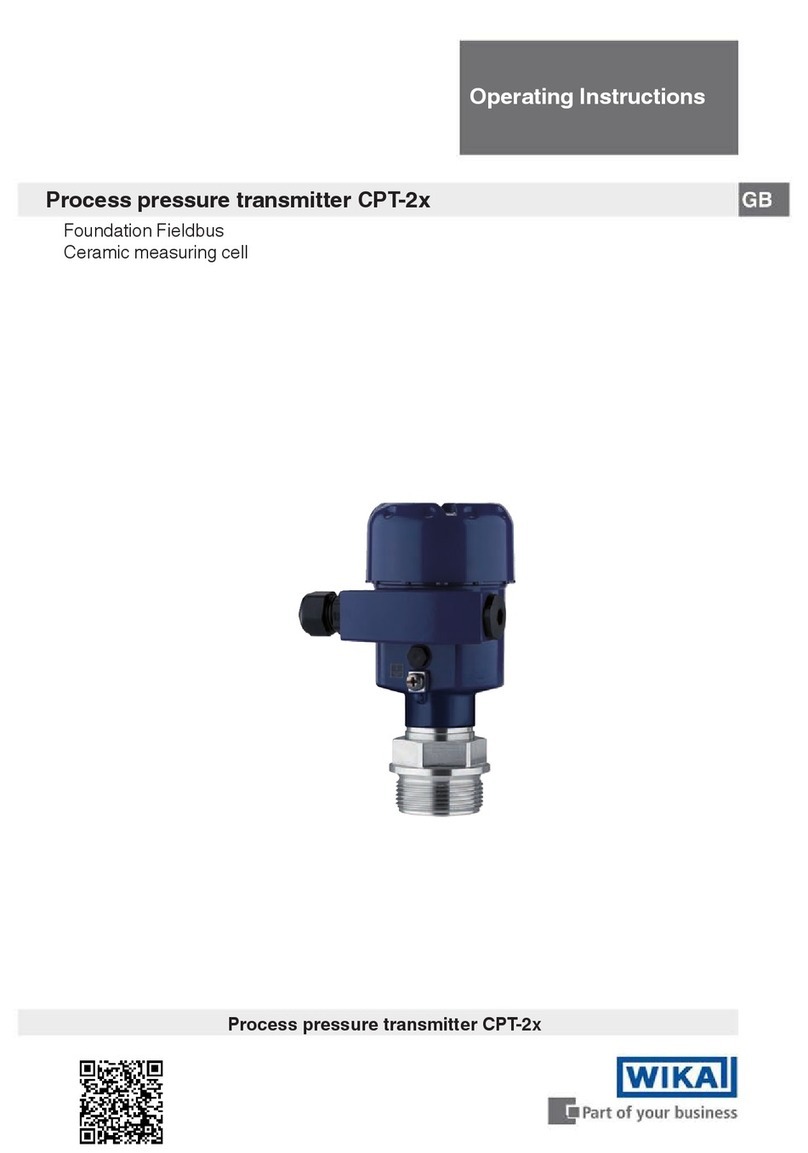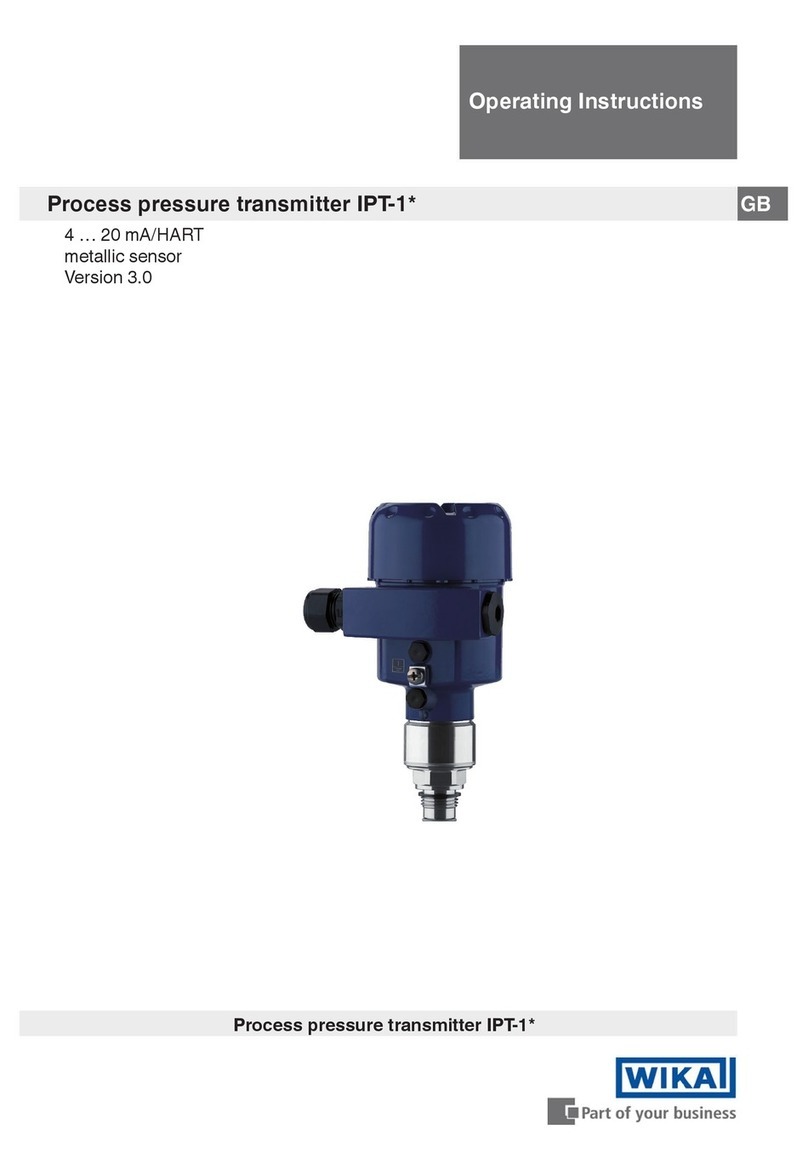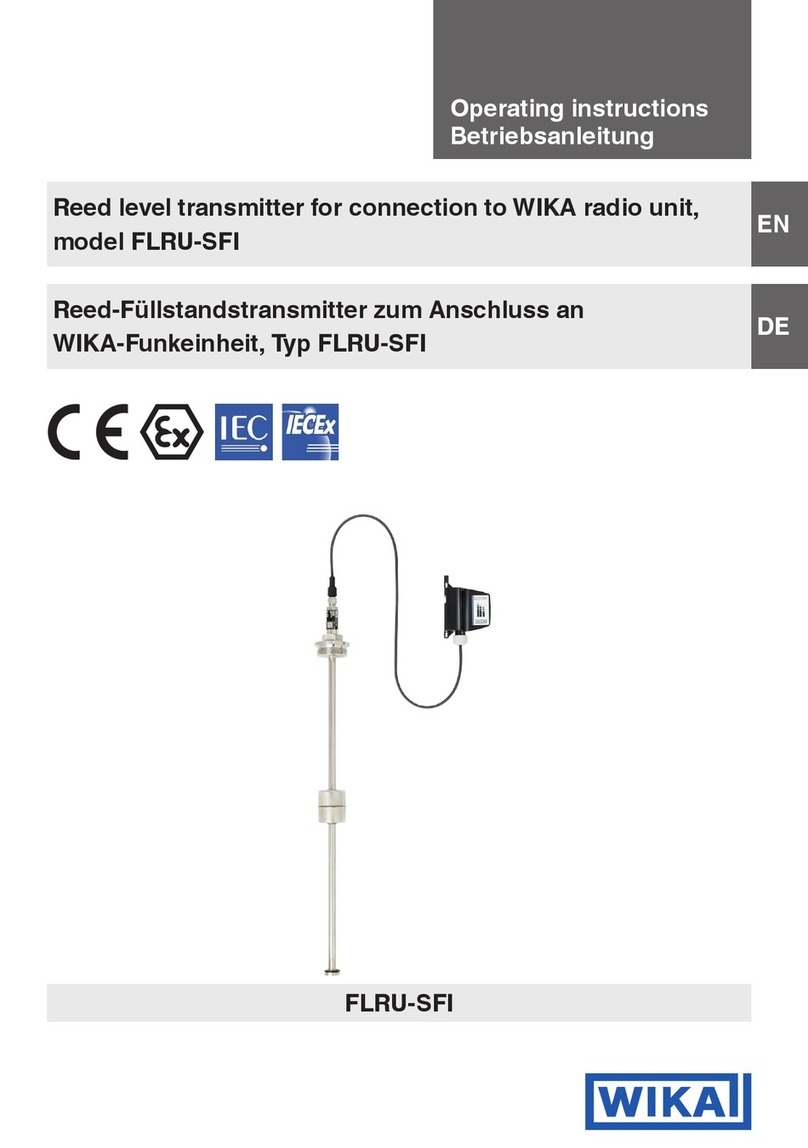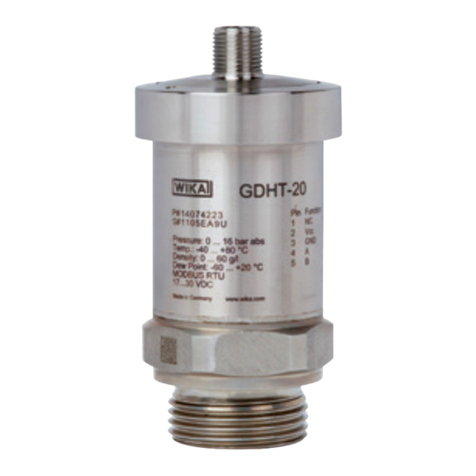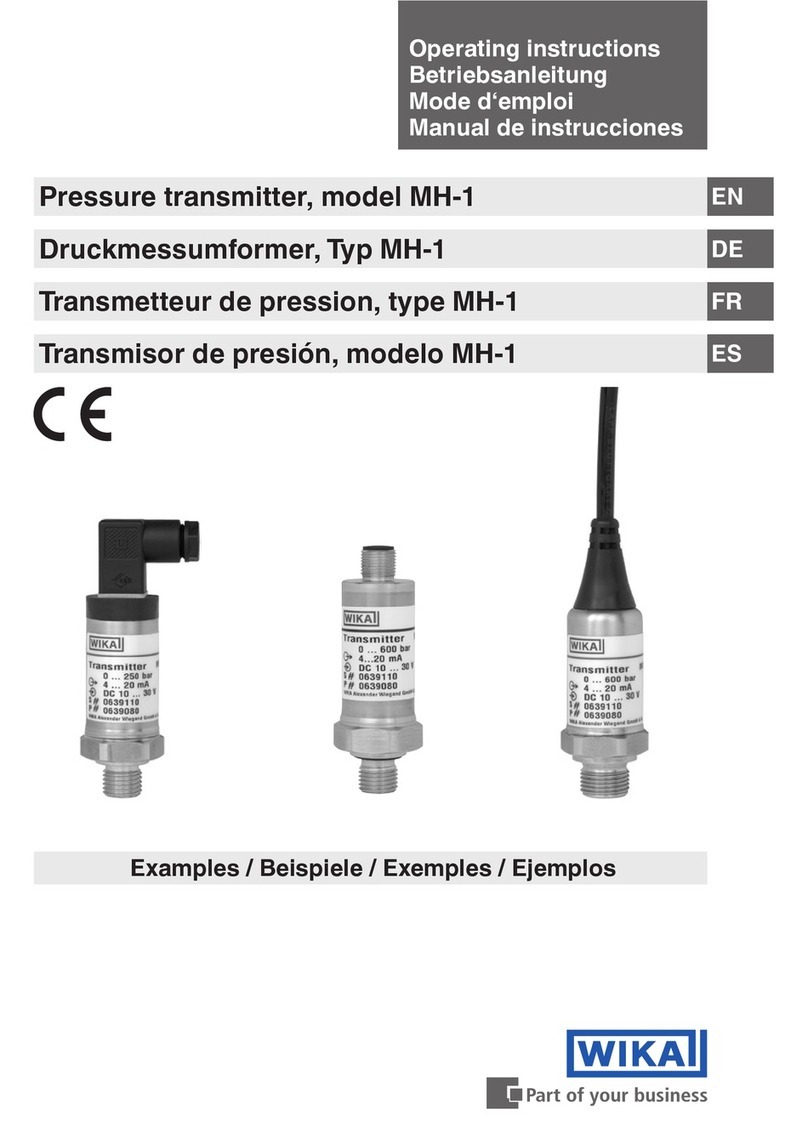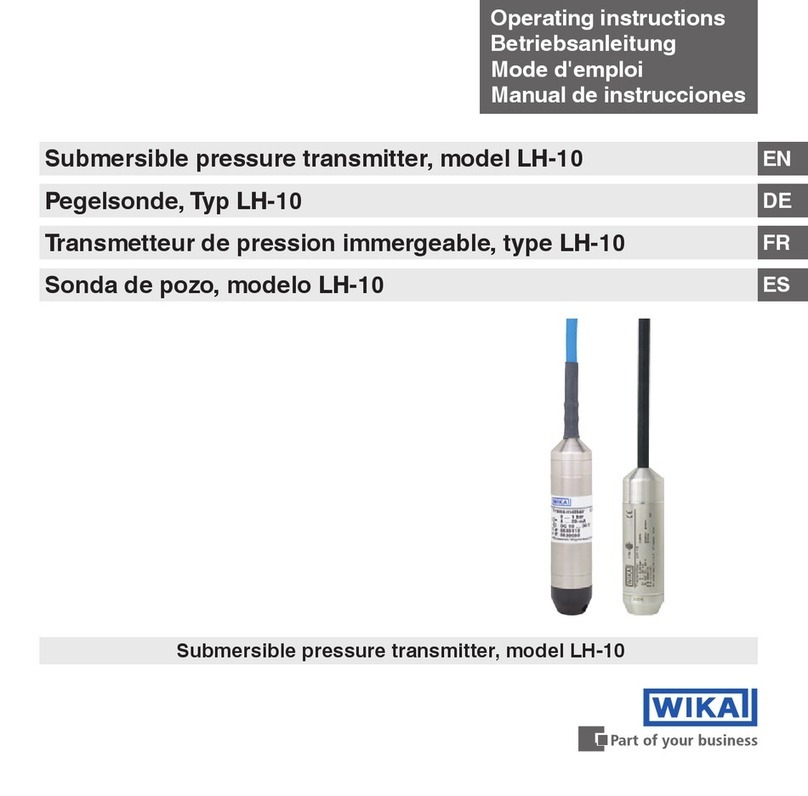Specifications Model HP-1
Pressure ranges 1) bar 1,600 2,500 4,000 5,000 6,000 7,000 8,000
Over pressure safety bar 2,300 3,500 5,000 6,000 7,000 8,000 10,000
Burst pressure bar 4,000 6,000 8,000 10,000 11,000 11,000 12,000
1) > 8,000 bar on request
Materials
Wetted partsStainless steel
CaseStainless steel
Power supply UBUBin VDC 10 ... 30 (14 … 30 with signal output 0 … 10 V)
Signal output and RAin Ohm 4 … 20 mA, 2-wire RA ≤ (UB– 10 V) / 0.02 A
maximum ohmic load RA{0 … 5 V, 3-wire} RA > 5,000
{0 … 10 V, 3-wire} RA > 10,000
{Other signal output on request}
Adjustability zero/span % ± 5 using potentiometers inside the instrument
Response time (10 ... 90 %) ms ≤1
Insulation voltage VDC 500
Accuracy % of span ≤ 0.25 (BFSL)
≤ 0.5 2)
2) Including non-linearity, hysteresis, zero point and full scale error (corresponds to
error of measurement per IEC 61298-2).
Non-linearity % of span ≤0.2 (BFSL) according to IEC 61298-2
1-year stability % of span ≤0.2 (at reference conditions)
Permissible temperature of
Medium 3)
-0 ... +80 °C 32 ... +176 °F
Ambience 3)
-20 ... +80 °C -4 ... +176 °F
Storage 3)
-40 ... +85 °C -40 ... +185 °F
3) Also complies with EN 50178, Tab. 7, Operation (C) 4K4H, Storage (D) 1K4,
Transport (E) 2K3
Specifications Model HP-2
Pressure ranges bar 1,600 2,500 4,000 5,000 6,000 7,000 8,000 10,000
Over pressure safety bar 2,300 3,500 5,000 6,000 7,000 8,000 10,000 11,000
Burst pressure bar 4,000 6,000 8,000 10,000 11,000 11,000 12,000 12,000
Pressure ranges psi 23,000 36,000 58,000 72,000 87,000 100,000 115,000 145,000
Over pressure safety psi 33,300 50,500 72,500 87,000 101,500 116,000 145,000 159,500
Burst pressure psi 58,000 87,000 116,000 145,000 159,500 159,500 174,000 174,000
Up to 15,000 bar / 217,000 psi on request
Specifications Model HP-1
Rated temperature range 0 ... +80 °C 32 ... +176 °F
Temperature coefficients within
rated temperature range
Mean TC of zero% of span ≤ 0.2 / 10 K
Mean TC of range% of span ≤ 0.2 / 10 K
CE- conformitiy
Pressure equipment directive97/23/EC
EMC directive89/336/EEC emission (class B) and immunity according to EN 61 326
Shock resistance g 100 according to IEC 60068-2-27 (mechanical shock)
Vibration resistance g 5 according to IEC 60068-2-6 (vibration under resonance)
Wiring protection
Short-circuit proofnessSig+ towards UB-
Reverse polarity protectionUB+ towards UB-
Weight kg Approx. 0.3
7. Starting, operation GB 7. Starting, operation GB
{ } Items in curved brackets are optional extras for additional price.






